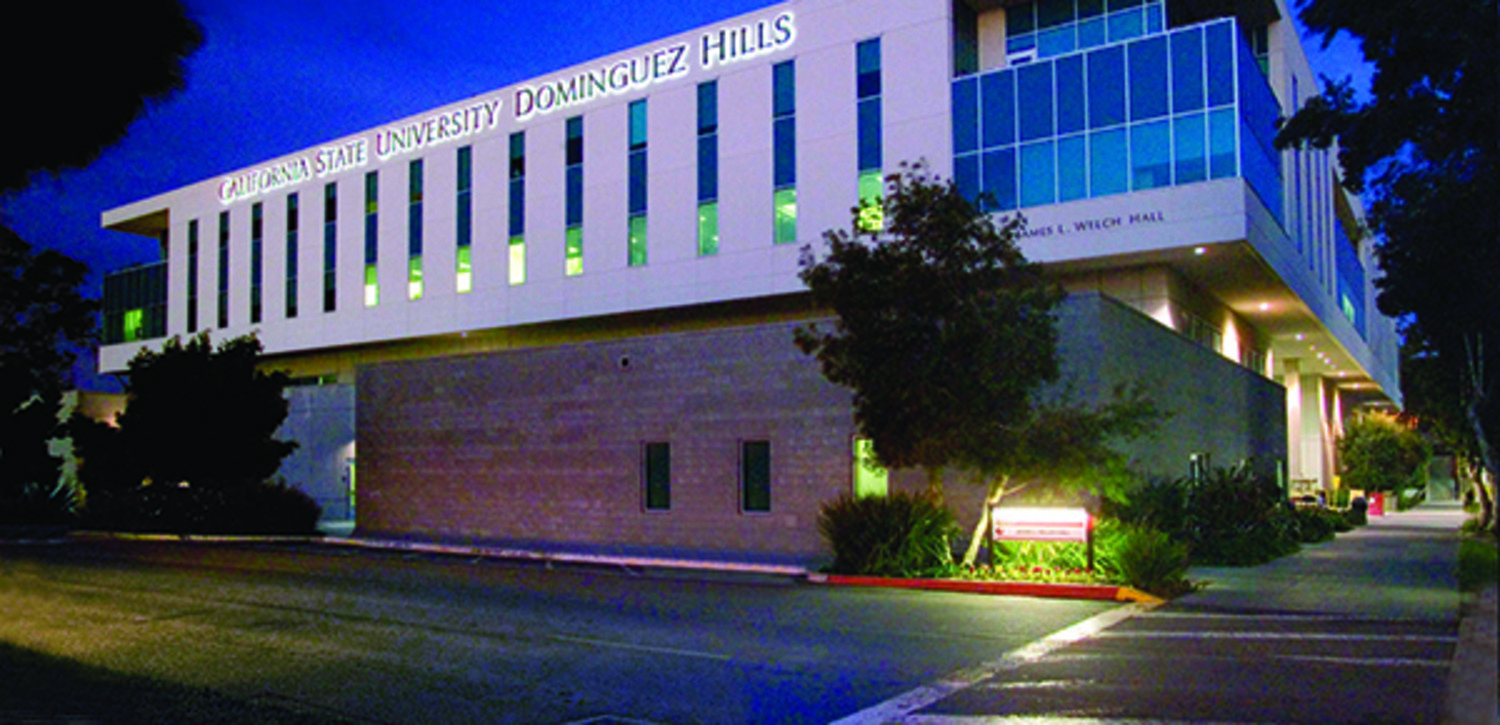Sensors Make Decisions At Fixtures
A lighting retrofit project uses student research to aid university energy savings. As a major consumer of energy and natural resources, California State Univ., Dominguez Hills (CSUDH), a public university in Los Angeles, has made it their responsibility to be a wise steward of scarce resources by reducing the use of non-renewable resources and increasing energy efficiency. In keeping with that philosophy, central plant and energy manager Kenny Seeton led a cost and energy-saving lighting retrofit project for CSUDH.
George EvansOct 12, 20227 Shares253 Views

A lighting retrofit project uses student research to aid university energy savings.
As a major consumer of energy and natural resources, California State Univ., Dominguez Hills (CSUDH), a public university in Los Angeles, has made it their responsibility to be a wise steward of scarce resources by reducing the use of non-renewable resources and increasing energy efficiency.
In keeping with that philosophy, central plant and energy manager Kenny Seeton led a cost and energy-saving lighting retrofit project for CSUDH. The retrofit came after Seeton and the physical-plant team evaluated the existing lighting system, conducted a two-month pilot project, and received the help of some environmental-science students from the university who researched several product options.
In the initial pilot, four sensors were integrated with each of four existing fluorescent fixtures (replacing existing florescent ballasts) outside of the IT suite, and the energy-monitoring results were shared with an earth sciences class. A group of students studied the performance data from the sensors, which supported the case to expand the pilot to include all corridors in Welch Hall, as well as in its IT offices and the server room.The project team was not timid in testing the limits of energy savings with the system. Corridor lights in the Welch Hall facility were set at 10% to 35% of full brightness. In the IT office spaces, most of the lights were set at 30% to 50%.
“There’s power to fixtures in Welch Hall corridors from 7 a.m. to 7 p.m., but with the advanced sensors, instead of those lights being on at 100%, the highest they ever go is 35%. And you don’t notice it. That’s how much we were overlit there,” Seeton said. “We couldn’t do that with just an occupancy sensor.”
The team chose to move forward with Enlighted Inc.’s, Sunnyvale, CA, platform because its sensors provided several benefits to the university. The project team particularly liked the system’s ease of implementation. Sensors communicate over a wireless network, enabling a relatively simple upgrade of CSUDH’s existing fixtures.
The sensors also were a cost-effective solution that could be easily installed, commissioned, and serviced by the facilities-management team at the university, making the solution affordable to implement and to maintain going forward.
Further, the sensors make control decisions locally at each fixture, adjusting light levels by sending information to the driver of the host fixture. Lighting-level decisions are made in several ways:
- Daylight harvesting: The sensors adjust light levels as natural light changes the need for overhead light based on weather and time of day.
- Motion sensing: During work hours when spaces are unoccupied, lamps in fixtures equipped with the advanced sensors idle from 0% to 10% luminosity until human-specific motion is detected.
- Digital PIR sensing: The sensors are designed to ignore other heat-producing items, such as fax machines, printers, and computers, or changes in the environment produced by HVAC systems.
“This product can adjust the light level based on the task. Before, if anyone wanted less light in their office, they took bulbs out of their fixtures,” Seeton said. “Instead of taking out bulbs and getting an uneven light, we can tune it down.”
Seeton stated that the 276 hallway sensors in Welch Hall and the South Academic Complex (SAC), and 188 sensors in Natural Sciences and Mathematics (NSM) and La Corte Hall (LCH), together save the university 201,436 kWh annually. The Enlighted lighting projects in these buildings are saving the university $26,289 in electricity costs over that same time period. Additionally, Southern California Edison issued a rebate of $51,565 for the campus energy savings brought about by the sensors.
The successful outcome at Welch Hall, SAC, NSM, and LCH has led to further installations on campus. Additional installation of 576 sensors at SAC and NSM, along with a new installation at Social and Behavior Sciences, are underway. Seeton estimated the installations will save the university 245,496 kWh and $30,483 in energy cost annually. He further expects Southern California Edison to issue a combined rebate of $58,919 for the energy savings on this project.
“From the people I’ve talked to, nobody has this extensive of a control system,” Seeton said.
Seeton has only begun to tap into what the system can do. “After I get it installed and adjust the light level and task-tune to individuals’ needs, then I’ll tie [Enlighted] into the heating and cooling system to save energy when nobody is in a space, especially for extended periods of time like semester breaks or vacation,” he said. “With this technology, I can adjust the light levels from my computer.”
Seeton considers a campus-wide lighting retrofit to be a no-brainer. And he’s not alone. Through discussions held with directors and energy managers from the 23 CSU campuses during monthly online meetings, Seeton has discovered that while the UC Santa Barbara, CSU Fullerton, CSU Northridge, CSU Sacramento, and CSU Channel Islands are following suit, CSU Dominguez Hills leads the way as an early adopter.
In addition to saving energy, the CSUDH lighting retrofit has been recognized with two awards: Top Project of the Year Award by Environmental Leader, an online trade publication, and the California Higher Education Energy Efficiency and Sustainability Best Practice Award.
Latest Articles
Popular Articles